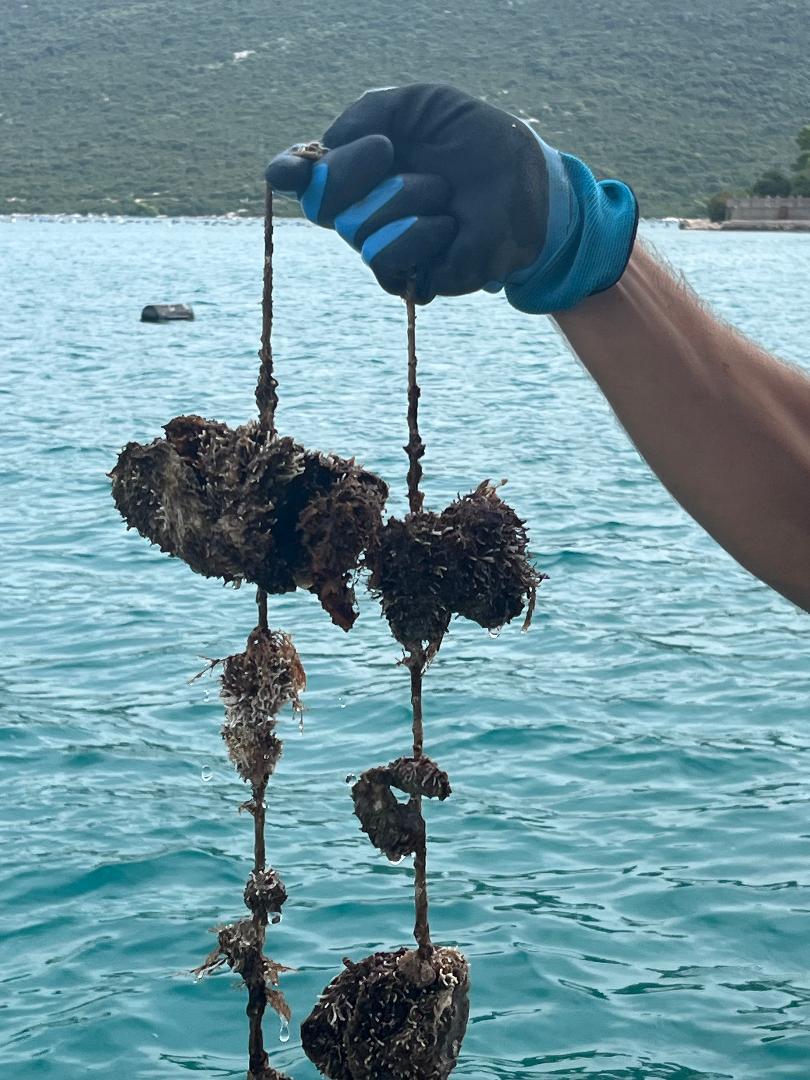OYSTER FARMING ON THE PELJESAC PENINSULAR
First up, let me admit that I am not an oyster fan, but having seen the oyster beds on previous visits to the area I was fascinated to find out more about it.
It’s the unusual geography of the Peljesac that makes oyster farming possible. It’s basically a long, long, finger of land joined to the rest of Croatia at one end, but running parallel to it. Behind it, away from the open sea is a calm, narrow channel of fabulously clear water called Malostonski Bay, which is perfect for shellfish.
Only a dozen licences exist, and these are jealously guarded and can change hands for significant sums of money. But despite the price tag, oysters are not instant phlegmy gold; an awful lot of hard work and heartache goes into their production.
An oyster starts its life as the tiniest dot, and the farmers put nets across the mouth of the bay to catch them. Once they are big enough they are moved to underwater cages until the time comes for them to be attached to the ropes they grow on. But oysters will only attach once, and farmed ones need to be removed for cleaning and to give them extra space to grow, so every time this is done they are helped back on to their perches with a little concrete.
Oysters have to be able to open to feed or they will die. It sounds obvious enough, but I hadn’t envisaged this constant movement. And it does cause problems for the farmers, because mussels like oysters as hosts and they can stop them from opening. Which is why they need to be cleaned. By hand. Thousands upon thousands of them. Constantly.
These days the Peljesac oysters have a new predator; non-native sea bream which have escaped from fish farms. Turns out they love oysters as much as tourists do, and they can cost the farmers a fortune in lost produce. Over the three years it takes to grow them, fewer than 30% of oysters make it to maturity. No wonder they’re so expensive!
